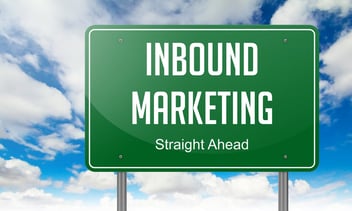Listening to the song “Circle of Life” introduces one to the perpetual rotation of life. It tells us that every living, breathing creature that walks the earth contributes to the phenomenon we call “life” that practically makes the world turn.
With the song having been a big hit, one couldn’t help but wonder, of all possible shapes for the popular metaphor the song is known for, why the circle? Clearly, it’s because circles don’t have an end. The circle does not have an edge, which often signifies an ending. Inside the circle, you can place other shapes of all possible sizes, and while they all could have points of endings and beginnings, the circle that contains them all will keep turning, and it will expand and contract depending on the mechanisms going on inside of it.
Where the circle ends and begins, none can tell. And what an ideal way that is to describe life, don’t you think? Where one life cycle ends, another begins, the exchange and distribution of energy just go on and on.
Interestingly enough, the same is true with growth in business. It is ever expanding and contracting. Sure, there was a time when business growth was likened to a funnel, where the pouring of initial efforts at the top leads to a certain flow of energy coming through the bottom. For a while this is how they described growth in business. But a new opposing concept has long been introduced through the Inbound Methodology, that shows business owners there is a better way to flourish.
This concept is what they call the Flywheel Model. So what is the Flywheel Model?
Let’s discuss!
The Flywheel as a Marketing Concept
The flywheel is a marketing model based on a concept from the classic business book “Good to Great” written by Jim Collins. It presents the idea that customers are your ultimate “salespeople” because if you give them the best possible service and delight them with it, they are most likely going to tell their friends about you, who will, in turn, buy your products. This will carry on like ripples, which will only widen your clientele and grow your business.
This same concept is used by HubSpot to support the Inbound Methodology. In a way, it was developed as an opposing concept to the Funnel, a sales and marketing strategy that somehow places customer satisfaction at the bottom, a set-up which does not promise a consistent delightful customer experience and may be detrimental to the growth and success of any business in the long run.
The flywheel model, as the name suggests, is likened to a flywheel, a structure that, as HubSpot puts it, “stores and releases energy”.
See, a flywheel is constructed in a circular form, and within this flywheel, are all the funnels that represent the various departments in your company that get to serve and interact with customers from the beginning until the end of their experience.
Now imagine that all these funnels– representing your marketing, sales, and customer service teams– initiate efforts that make the entire flywheel start rotating. The flywheel, in turn, stores and releases energy, making it rotate endlessly, as all the other funnels within it also initiate efforts to produce a steady flow of energy.
Eventually, with enough effort from all funnels, the flywheel gains momentum and continues to rotate on its own, further generating leads that turn into actual buyers/clients. That’s just fantastic news for any business, don’t you think?
The Role of the Flywheel in the Inbound Strategy
How does a flywheel help in an inbound strategy?
As already established, the flywheel model is an idea that is supportive of the general concept of the Inbound Strategy. But you might wonder, exactly how does a Flywheel help in an inbound strategy?
The flywheel model makes it a point that the customer is at the very core. The marketing, sales, and customer service funnels are all directed towards this core of the flywheel, ensuring that the customers will always be taken care of whichever stage they may be in their buyer’s journey.
The Inbound Strategy is ultimately about drawing customers in, nurturing them, and delighting them with a myriad of efforts and offerings that they can’t always get elsewhere.
How does a flywheel help in an inbound strategy?
By making sure that customer satisfaction can be guaranteed at all times as they are central to all the mechanisms within the flywheel. These satisfied customers serve as energy that will continue to drive your flywheel. But towards where, you might wonder.
Well, towards growth, where else?
Why Implement a Marketing Flywheel
Now that you have a better understanding of what the flywheel model is in marketing, the interest in the concept and the possibility for growth that it poses might be growing on you. So why implement a marketing flywheel? Let’s get right into that.
Inbound Marketing has long proven that it is an effective and a relatively much cheaper alternative to traditional marketing. Asking why implement a marketing flywheel when you are interested in the leads you can generate when you implement an inbound strategy can be likened to you wanting to buy the boat but not the oars. You are most likely not getting anywhere without the oars. You’ll just idly sit there on your little boat, waiting for results that you cannot possibly derive out of implementing an incomplete strategy.
The flywheel model is key to a successful implementation of the inbound methodology. It is a concept within the concept that is supportive of your overall inbound strategy.
It puts your customers at the very center of all your mechanisms, implementing the flywheel model guarantees that customer satisfaction at every stage will be the priority. In time, your happy and satisfied customers will only grow your clientele.
Implementing a holistic inbound strategy means you don’t get to cherry-pick your way through the methodology that backs it up. You implement it all the way– this means having the flywheel model in your strategy, too. At the end you'll see, putting customer satisfaction at the heart of your strategy will reap you great rewards. The Flywheel Model will help you survive in tough times and make you thrive in good times.
Marketing efforts are primarily geared towards generation of leads. Learn how the Inbound Methodology can help you generate better leads. Download our ebook today!

 What is the Flywheel Model?" loading="lazy">
What is the Flywheel Model?" loading="lazy">


